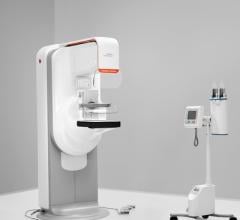September 20, 2010 – There is yet no straightforward way to determine the optimal dose level and treatment schedules for high-dose radiation therapies such as stereotactic radiation therapy, used to treat brain and lung cancer, or for high-dose brachytherapy for prostate and other cancers. Radiation oncologists at the Ohio State University Comprehensive Cancer Center-Arthur G. James Cancer Hospital and Richard J. Solove Research Institute (OSUCCC-James) may have solved the problem by developing a new mathematical model that encompasses all dose levels.
Typically, radiation therapy for cancer is given in daily, low doses spread over many weeks. Oncologists often calculate the schedules for these fractionated, low-dose treatment courses using a mathematical model called the linear-quadratic (LQ) Model. The same calculation model is used to evaluate radiation response, interpret clinical data and guide clinical trials.
“Unfortunately the LQ Model doesn’t work well for high-dose radiation therapy,” says co-author Dr. Nina Mayr, professor of radiation oncology at the OSUCCC-James. “Our study resolves this problem by modifying the current method to develop the Generalized LQ (gLQ) Model that covers all dose levels and schedules.”
If verified clinically, the Generalized gLQ Model could guide the planning of dose and schedules needed for the newer radiosurgery and stereotactic radiation therapy and high-dose brachytherapy procedures that are increasingly used for cancer patients, she says.
“Developing proper radiation dose schedules for these promising high-dose treatments is very challenging,” Mayr says. “Typically, it involves phase I dose-finding studies and a long, cumbersome process that allows only gradual progression from the pre-clinical and clinical trial stages to broader clinical practice.”
The new gLQ Model could allow oncologists to design radiation dose schedules more efficiently, help researchers conduct clinical trials for specific cancers more quickly and make these high-dose therapies available to cancer patients much sooner, Mayr says.
Fractionated low-dose therapy causes cumulative damage to tumor cells during the many weeks of exposure, while causing minimal damage to hardier normal cells. Patients, however, must return repeatedly to the hospital for many weeks to complete their treatment. High-dose therapy has become possible because of advances in computer and radiation technology. It uses multiple beams of radiation that conform tightly to a tumor’s shape. They converge on the cancer to deliver higher total radiation levels, while sparing normal tissues. This kills more tumor cells per treatment, so far fewer treatments are needed overall.
The new study, published recently in the journal Science Translational Medicine, tested the gLQ Model in cell and animal models and is expected to be evaluated soon in clinical trials.
“Our Generalized LQ Model determines appropriate radiation levels across the entire wide spectrum of doses, from low and high, and from many to very few treatments, which is a new approach,” Mayr says.
Note: First author Dr. Jian Z. Wang, director of the OSUCCC-James Tumor Response Modeling Laboratory in Radiation Oncology, passed away unexpectedly in June 2010. He was largely responsible for developing the Generalized gLQ Model. Other Ohio State researchers involved in this study were Drs. Zhibin Huang, Simon S. Lo and William T.C. Yuh.


 December 16, 2025
December 16, 2025 









